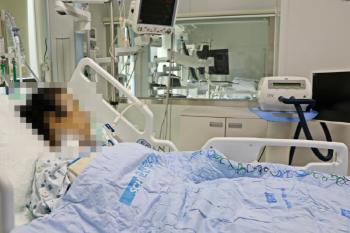Urgent local customized strategy to solve ER overcrowding...We need to expand emergency clinics at night and on holidays
Jun 13, 2025
|
The Medical Policy Institute of the Korean Medical Association (KEMA) recently published a report on 'policy suggestions for resolving overcrowding in the emergency room according to the severity of patients visiting emergency medical institutions (Research Director: Choi Il-guk, Planning Director of the Korean Society of Emergency Medicine).' The main focus of this study is that addressing the problem of ER overcrowding requires shifting the central axis of the policy away from applying uniform policies across the country and toward sophisticated 'regional customization strategies' based on data.
◇Women go to the emergency room with 'illness' and men go to the emergency room with 'accident'
The report noted that the study was conducted with data from 2021 to 2022, when the effects of the COVID-19 pandemic remained, and rather analyzed that this suggests the severity of the current emergency medical field. Even at a time when medical use was refrained from due to infection concerns, the fact that mild patients were clearly concentrated in the higher emergency room suggests that the problem of overcrowding in the emergency room has become much worse than shown in the data at the end of the epidemic.
The study analyzed a total of 9,873,864 patients who visited more than one local emergency medical center during the two years of 2021 and 2022.
In 2021, a total of 4,812,100 people (50.0% female and 50.0% male) visited the emergency room, and in 2022, a total of 5,061,764 people (50.1% female and 49.9% male) visited the emergency room.
There were also differences in the reasons and severity of emergency room visits according to gender.
Women were more likely to visit the emergency room due to illness than men, while men were more likely to visit the emergency room for reasons other than illness (damage, addiction, etc.).
In the patient group who visited the hospital due to the disease, men tended to have a slightly higher proportion of severely ill patients than women, and in the patient group who visited the hospital due to reasons other than the disease (damage, etc.), the proportion of mild patients was overwhelmingly high in both men and women.
◇ 59.3% of patients with mild symptoms visit emergency medical institutions at night
The report also pointed out that 'the phenomenon of mild patients flocking to higher-level emergency medical institutions frequented by serious patients' is a key problem that appears nationwide.
This is because patients tend to prefer large hospitals regardless of the severity of symptoms, and because there are no other medical institutions open at night and on holidays, limited critical emergency medical resources are dispersed. Even among emergency medical institutions of the same level in the same region, patients are concentrated in specific hospitals, which is analyzed to be a matter that the government must consider when establishing overcrowding measures.
In addition, as a result of the study, it was found that the number of mild patients visiting the emergency room increased rapidly at night after 6 p.m. when outpatient treatment was completed.
For two years, 59.3% of all mild patients visited emergency medical institutions at night.
In the case of regional emergency medical centers, mild patients who visited at night complained of symptoms such as abdominal pain, fever, headache, back pain, low energy, and various trauma (ankle and finger pain).
In the case of local emergency medical centers, abdominal pain, fever, and headache were the most common, and in addition, they often visited due to rash, hives, vomiting, epigastric pain, and sore throat. "These symptoms are painful for patients, but in most cases, they can be managed sufficiently in primary medical institutions or equivalent facilities," the researchers said, stressing that "the absence of a reliable alternative medical institution in the end is a key factor in driving patients to the emergency room and deepening overcrowding."
◇'Regional Differential Strategy' Urgent…Need to upgrade patient classification and transfer system
The researchers emphasized the urgent need for a 'regional customized differential strategy' to solve these complex problems.
First, there is an urgent need to come up with a reliable alternative medical institution operation plan.
The researchers explained that "it is most urgent to expand the 'community night and holiday emergency care clinic' that allows mild patients to visit with confidence during the night and holiday periods when outpatient treatment has ended."
The report pointed out that simple compensation alone is not sustainable through past 'Moonbit Children's Hospital' cases, and suggested that the government should present an unconventional support model that can guarantee stable operation such as direct support for operating expenses and labor costs.
Second, public relations and education for proper medical use should be strengthened.
They say that the public should be transparently informed of the reality that both severe and mild patients are flocking to higher emergency rooms, and that the golden time of severe patients could be threatened. The researchers should conduct a systematic campaign to induce severe emergency diseases such as myocardial infarction and stroke to go to the upper emergency room through 119 ambulances without delay," he stressed.
Third, it is necessary to promote efficient distribution of medical resources in the region and strengthen linkage.
The researchers need to upgrade the 119 paramedics' pre-hospital patient classification and transfer system in conjunction with the real-time capabilities of local medical institutions to alleviate the concentration of patients to specific institutions even within the same area. This means that the patient should be transferred to an institution that can provide the most appropriate treatment at that point, rather than an unconditionally close or famous hospital", he suggested.
Choi Il-guk, Planning Director of the Korean Society of Emergency Medicine, said, `The government's role is not to dismiss overcrowding in emergency rooms as just a personal choice of users, but to provide stable medical infrastructure to easily find other alternatives and to inform them properly.' We hope that this study will be used as basic data for establishing sophisticated policies that reflect the specificity of each region, so that all emergency rooms can regain their original function and protect the lives of the people more firmly" he said.
This article was translated by Naver AI translator.














